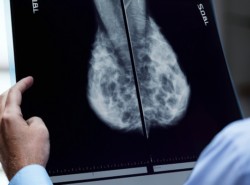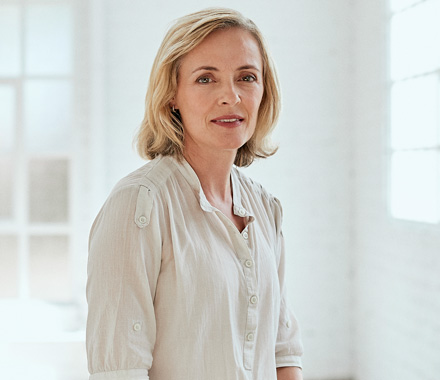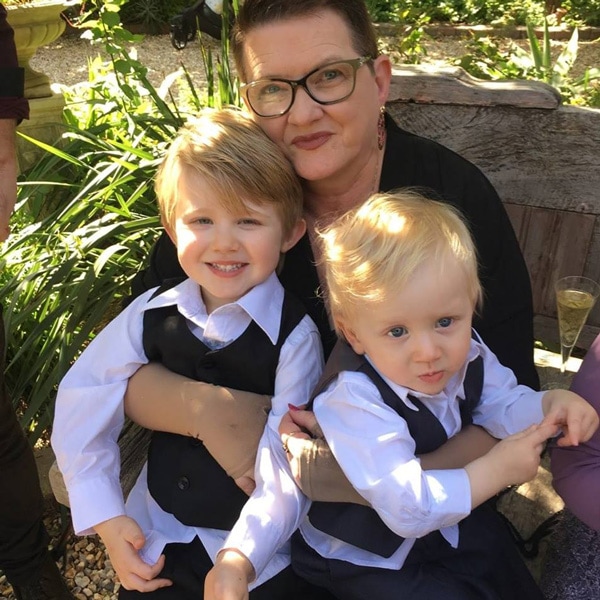
BREAST CANCER PREVENTION AND RISK
Breast cancer is the most commonly diagnosed cancer amongst women in Australia. It is estimated that 1 in 7 women will be diagnosed with breast cancer in their lifetime.
Directly – or indirectly – more Australian families are likely to be affected by breast cancer than any other type of cancer.
There are a range of factors that contribute to your chance of developing breast cancer. Some risks can be reduced, while others you might have no control over.
Read ahead for more information on breast cancer and risk prevention.
HOW TO MINIMISE YOUR RISK OF DEVELOPING BREAST CANCER
The incidence (number of new cases) of breast cancer is predicted to increase year on year. And while there are many risk factors that we have no control over, such as being a woman, or getting older, there are others which can be changed or managed.
The following lifestyle factors have been linked to breast cancer risk. Although these may increase your risk (or chance) of developing breast cancer, having one or more of these risk factors does not mean that you will definitely develop cancer. Likewise, having no known risk factors also does not guarantee that you will never develop cancer. If you are concerned about any of these risk factors, see your doctor to discuss any concerns prior to making lifestyle changes.
Alcohol intake
 Drinking alcohol is associated with an increased risk of breast cancer, and with breast cancer returning. The risk of breast cancer rises as the number of drinks regularly consumed increases. Currently, there does not appear to be a ‘safe’ level of regular alcohol consumption. According to Cancer Australia, approximately 6% of breast cancer cases each year in Australia are due to alcohol consumption.
Drinking alcohol is associated with an increased risk of breast cancer, and with breast cancer returning. The risk of breast cancer rises as the number of drinks regularly consumed increases. Currently, there does not appear to be a ‘safe’ level of regular alcohol consumption. According to Cancer Australia, approximately 6% of breast cancer cases each year in Australia are due to alcohol consumption.
Being overweight and obesity
 For women who have experienced menopause (postmenopausal women), being overweight or obese, or gaining weight, is linked to an increased risk of breast cancer. Keeping to a healthy weight range reduces the risk of breast cancer. According to Cancer Australia, it is estimated that 8% of postmenopausal breast cancers each year in Australia are due to being overweight or obese.
For women who have experienced menopause (postmenopausal women), being overweight or obese, or gaining weight, is linked to an increased risk of breast cancer. Keeping to a healthy weight range reduces the risk of breast cancer. According to Cancer Australia, it is estimated that 8% of postmenopausal breast cancers each year in Australia are due to being overweight or obese.
Physical activity
 Physical activity is associated with a reduced risk of breast cancer. Active women of all ages have a decreased risk of breast cancer compared to women who do not exercise. The more physically active you are, the greater the health benefits. Cancer Australia states that approximately 8% of postmenopausal breast cancers each year in Australia are due to a lack of physical activity.
Physical activity is associated with a reduced risk of breast cancer. Active women of all ages have a decreased risk of breast cancer compared to women who do not exercise. The more physically active you are, the greater the health benefits. Cancer Australia states that approximately 8% of postmenopausal breast cancers each year in Australia are due to a lack of physical activity.
Having children and breastfeeding
 Having children is linked to a reduced risk of breast cancer. According to Cancer Australia, the risk of breast cancer decreases by 7% for each child the women has had. Breastfeeding is probably associated with a small decreased risk of breast cancer as well – the longer the duration of breastfeeding, the lower the risk of breast cancer.
Having children is linked to a reduced risk of breast cancer. According to Cancer Australia, the risk of breast cancer decreases by 7% for each child the women has had. Breastfeeding is probably associated with a small decreased risk of breast cancer as well – the longer the duration of breastfeeding, the lower the risk of breast cancer.
It is thought that the changes which occur in cells of the breast during a full-term pregnancy or breastfeeding may make the cells less likely to become cancerous. This may explain why women who have had children or have breastfed have reduced breast cancer risk.
Smoking
 There is evidence that suggests an association between smoking and breast cancer risk. There may be an increased risk of breast cancer for women who started smoking at a very early age, or for many years before their first child. However, tobacco smoke contains more than 70 chemicals that are known to cause cancer; smoking is also known to cause cancer of many organs of the body including lung, throat, liver, bowel and bladder cancers.
There is evidence that suggests an association between smoking and breast cancer risk. There may be an increased risk of breast cancer for women who started smoking at a very early age, or for many years before their first child. However, tobacco smoke contains more than 70 chemicals that are known to cause cancer; smoking is also known to cause cancer of many organs of the body including lung, throat, liver, bowel and bladder cancers.
Sinead’s story

“I want people to be aware that women of all ages can get this disease. Awareness and early diagnosis are essential to surviving breast cancer. People need to realise that breast cancer research saves lives. Without it, I, along with many others, would not be alive. “ Sinead, diagnosed 2011
BREAST CANCER RISK FACTORS YOU CAN’T CHANGE
While a person’s risk of breast cancer can be increased due to certain lifestyle factors, there are factors that people have no control over (known as non-modifiable risk factors). Although these may increase your risk (or chance) of developing breast cancer, having one or more of these risk factors does not mean that you will develop cancer. Having no known risk factors also does not guarantee that you will never develop cancer.
While non-modifiable risk factors cannot be changed, you can still reduce your risk of breast cancer by making healthy lifestyle choices and managing modifiable risk factors. If you are worried about your risk of developing cancer, see your doctor to discuss any concerns. Non-modifiable risk factors include:
Gender
 99% of breast cancer cases occur in women. While some men do get breast cancer (estimated at 1 in 550), women are at a much higher risk (estimated at 1 in 7 women will be diagnosed).
99% of breast cancer cases occur in women. While some men do get breast cancer (estimated at 1 in 550), women are at a much higher risk (estimated at 1 in 7 women will be diagnosed).
Ageing
 The older women get, the higher their risk of developing breast cancer. In Australia, breast cancer can occur in younger women, but about three out of four breast cancer cases occur in women aged 50 years and older. The average age of diagnosis for breast cancer is 61 years.
The older women get, the higher their risk of developing breast cancer. In Australia, breast cancer can occur in younger women, but about three out of four breast cancer cases occur in women aged 50 years and older. The average age of diagnosis for breast cancer is 61 years.
Family history
 A family history of breast cancer means having a first-degree relative who had or has breast cancer. The relative can be from the father’s or mother’s side of the family. Since breast cancer is the most commonly diagnosed cancer in Australia among women, many women will have a family history by chance. However, sometimes there is a specific genetic variation (or mutation in a gene), that we inherited from one of our parents that increases the risk of breast cancer. Only about 5-10% of breast cancer cases can be explained by an inherited mutation. The importance of family history rises with the number of family members affected and the younger their ages at diagnosis.
A family history of breast cancer means having a first-degree relative who had or has breast cancer. The relative can be from the father’s or mother’s side of the family. Since breast cancer is the most commonly diagnosed cancer in Australia among women, many women will have a family history by chance. However, sometimes there is a specific genetic variation (or mutation in a gene), that we inherited from one of our parents that increases the risk of breast cancer. Only about 5-10% of breast cancer cases can be explained by an inherited mutation. The importance of family history rises with the number of family members affected and the younger their ages at diagnosis.

BRCA1 and BRCA2 genes
 Having a fault (or mutation) in the BRCA1 and BRCA2 genes is associated with an increased risk of breast and ovarian cancer. BRCA1 and BRCA2 mutations are considered rare to very rare. About 1 in 400 to 1 in 800 people have a BRCA1 or BRCA2 gene mutation. Over her lifetime, a woman who carries a mutation in one of these genes has about 70% chance of developing breast cancer. However, not everyone who has a faulty BRCA1 or BRCA2 gene will develop cancer. Only about 5-10% of female breast cancers can be explained by inherited mutations. If you are concerned that you may have an increased risk of breast cancer, please speak with your GP or local family cancer clinic, who will help you assess your risk and refer you for further genetic testing if needed.
Having a fault (or mutation) in the BRCA1 and BRCA2 genes is associated with an increased risk of breast and ovarian cancer. BRCA1 and BRCA2 mutations are considered rare to very rare. About 1 in 400 to 1 in 800 people have a BRCA1 or BRCA2 gene mutation. Over her lifetime, a woman who carries a mutation in one of these genes has about 70% chance of developing breast cancer. However, not everyone who has a faulty BRCA1 or BRCA2 gene will develop cancer. Only about 5-10% of female breast cancers can be explained by inherited mutations. If you are concerned that you may have an increased risk of breast cancer, please speak with your GP or local family cancer clinic, who will help you assess your risk and refer you for further genetic testing if needed.
Hear from Associate Professor Juliet French on research into breast cancer genetic factors
Age when periods (or menstruation) started
 Starting periods at an early age (before the age of 12) is linked to a slightly increased risk of breast cancer. This is likely to be related to hormonal factors. For example, women who begin having periods at a younger age have a higher lifetime exposure to oestrogen and progesterone, which may increase the risk of breast cancer.
Starting periods at an early age (before the age of 12) is linked to a slightly increased risk of breast cancer. This is likely to be related to hormonal factors. For example, women who begin having periods at a younger age have a higher lifetime exposure to oestrogen and progesterone, which may increase the risk of breast cancer.
Late menopause
 Having menopause later is linked to an increased risk of breast cancer. Menopause occurs when a woman stops having periods permanently. The average age of menopause for women in Australia is 51 years. A woman who is at menopause when she is 55 has about 12% higher risk of breast cancer compared to a woman who has menopause aged 50-54 years.
Having menopause later is linked to an increased risk of breast cancer. Menopause occurs when a woman stops having periods permanently. The average age of menopause for women in Australia is 51 years. A woman who is at menopause when she is 55 has about 12% higher risk of breast cancer compared to a woman who has menopause aged 50-54 years.
High breast density
 Having higher than average breast density (as detected by a mammogram) is linked to an increased risk of breast cancer. Breast density can only be measured by a mammogram and is not related to how the breasts look, feel, their size or firmness. How breast density contributes to breast cancer risk is not well understood. Other genetic and established risk factors, such as age, body mass index and whether a woman has had children, also contribute to breast density.
Having higher than average breast density (as detected by a mammogram) is linked to an increased risk of breast cancer. Breast density can only be measured by a mammogram and is not related to how the breasts look, feel, their size or firmness. How breast density contributes to breast cancer risk is not well understood. Other genetic and established risk factors, such as age, body mass index and whether a woman has had children, also contribute to breast density.
Did you know?
Ageing population, health and lifestyle factors and better detection have all contributed to an increase in breast cancer diagnosis rates, but we know that 1 in 3 cancer diagnoses could be prevented. It’s important to remember there is no single cause of breast cancer: it’s the combination of many factors in any individual that makes up their personal risk for developing breast cancer.
Tracey’s story

Tracey with her grandchildren
“Apart from the obvious ultimate result – Zero Deaths from breast cancer – I also hope that research will discover effective means of preventing breast cancer in the first place, a more effective method of identifying risk factors and hopefully a better, less painful and more dignified treatment” Tracey, diagnosed 2010
iPREVENT
 There are many ways you can reduce your risk of developing breast cancer. It’s important that these options are known and available across the entire population, regardless of your geographical or socio-economic situation.
There are many ways you can reduce your risk of developing breast cancer. It’s important that these options are known and available across the entire population, regardless of your geographical or socio-economic situation.
To help all Australians to know and manage their personal breast cancer risk, NBCF has funded the innovative work of Professor Kelly-Anne Phillips. Her development of web-based tool, iPrevent, was designed help all Australian women to estimate their risk of developing breast cancer so they can take appropriate action.
The evidence that phytoestrogens (plant oestrogens) and soy products in the diet are associated with breast cancer risk is inconclusive. Only a small number of studies have been performed and the evidence is inconsistent; however, analyses of higher quality cohort studies show no association with breast cancer risk for intake of any specific group of dietary oestrogens, including ‘isoflavones’ (a type of phytoestrogen found in soybeans and soy products) and soy and soy products.
There are a range of factors that contribute to your chance of developing breast cancer. Some risks can be reduced (such as limiting alcohol), while others you might have no control over (such as genetics). Although some factors may increase your risk of developing breast cancer, having one or more of these risk factors does not mean that you will definitely develop cancer. Likewise, having no known risk factors also does not guarantee that you will never develop cancer. It is recommended that you speak to your doctor if you are worried about your risk of developing breast cancer.
There is no conclusive evidence that silicone-filled breast implants are associated with risk of breast cancer. Several studies have been done, and while these have had limitations, none has conclusively shown any link between silicone breast implants and increased risk of breast cancer.
Related Research
